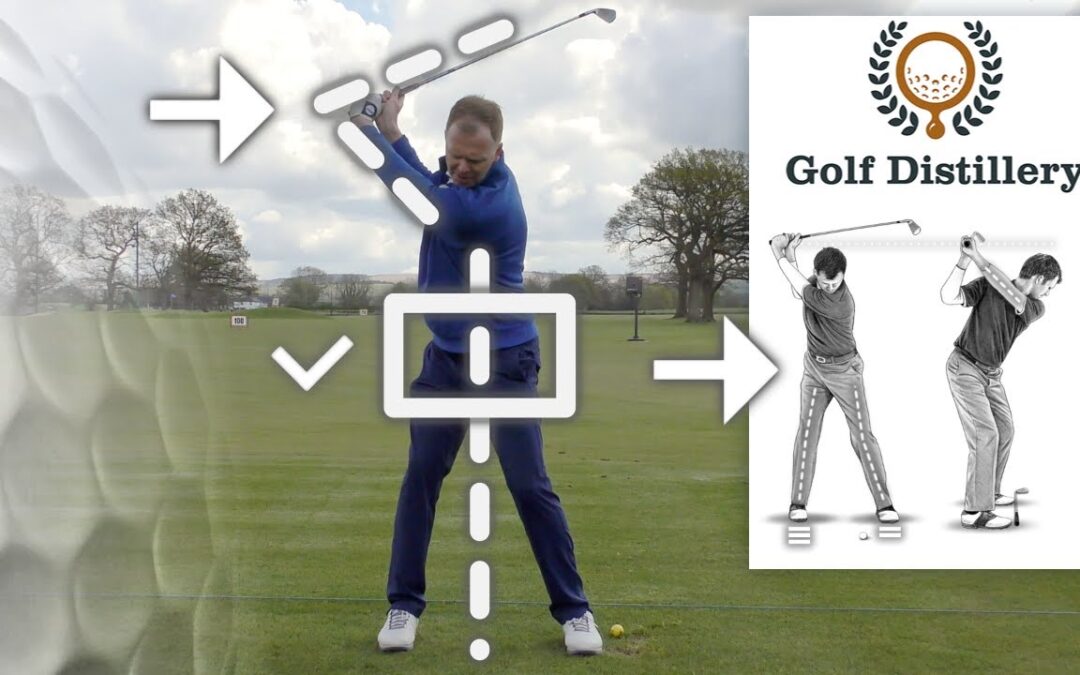– The journey to the top of
the backswing now continues. We've gone through the
halfway back position, sorry, takeaway position,
halfway back position. We're moving on now to the
top of the backswing position. And this is one of those positions that I wouldn't ever give
anybody a hard and fast position that they must get to all the time, because golf was are all
made up so differently, different body types, different
body shapes, flexibility, age, injury profile, and
all that sort of jazz. We're not going to give you
a hard and fast position that you should be exactly, I'm just going to give you some guidance about what I'd like to try and see. So, takeaway, halfway back, keep going on that journey as far around as you
feel comfortable doing. I would always like to
see golfers get past the 12 o'clock position on the clock face. I think that's most golfers are capable of getting past 12 o'clock, towards one, two, and
ultimately three o'clock. I would suggest between one and three is perfect for most golfers
if you're hitting a mid iron.
We can of course be a little bit shorter if we're just chipping
and pitching the ball and maybe if you go in with drive and you want to go for a real long drive, we might let the club
get a little bit longer than three o'clock. But understand the basic principle, that generally speaking
the shorter the swing, the more control but the less power. The longer the swing, the more power but the less control. Now of course, there's caveats to that where you've got golfers like Jon Rahm who's really short but really powerful. And you've probably got
golfers at your golf club that are really long and then don't hit the
ball very far at all. And then the general rule, if you want more control
out of your golf game, you can make shorter swings, if you want more distance
out of your golf game, at some point, you're going to
have to get that club moving and get a slightly longer swing. From this angle, we work on shoulder turn, high hands and turning
around as far as you can. And you can hear my voice, there starts to be a little bit of tension as they get round there and that's a good thing.
Cause that's me winding things up sort of pulling the elastic band,
ready to release it, to generate the power. So we're turning up to the top, the club gets around about two o'clock, then I can start to generate
some power on the way down. You'll notice with that, that the shoulders are turning
around about 90 degrees. So if I lay a club over my chest, I can turn to about 90 degrees and you should do that
as an exercise as well. You'll sometimes see golfers who turn and they only get this
much shoulder rotation. Now, unless you've got an
injury or a back problem, we'll try and get round
to 90 degrees if possible and then likewise releasing
that shoulder rotation through in the follow-through, which we'll cover in
another video in a second. So big shoulder rotation, stretch back with the hands and arms, little bit of wrist hinge
around about two o'clock and then delivering that club down with a good amount of power. Now, another way of your looking
at your backswing position would be this angle. And I think we're all used to
seeing the classic position where the club sets just here.
It's high in the air, it's parallel to the intended target line, parallel to the floor. Now, that would be classed as the perfect top of the backswing position. The other checkpoint we
could also have there is that leading edge should be similar to the left
forearm left wrist position. Now, we might see Dustin Johnson can get it into a very close position, you'll see all the golfers in
a slightly more open position, but generally speaking, that clubhead should
match that lead forearm.
So we take it to the top. That's going to be sort of classic top of the backswing position, bringing the club down from there should give a nice smooth delivery. Now, if your golf swing
isn't quite full length and you make a slightly shorter swing, your clubs should be pointing
out to that side a little bit. And if you make a longer swing, your clubs should be pointing across the line slightly this way.
So don't worry if you're
slightly across the line or you're slightly laid off, as long as you're shorter or longer than the full length swing. So the club to full
length points at target, shorter points out to the left of target for the right-handed golfer, longer points across the line slightly. Get your swing on video to check that. It's really important that you don't use a mirror for this bit because you'll never swing full
length in a practice swing. And you probably can't watch
yourself in a full shot when you're going to hit a golf ball. So I can make practice
swings all day long. I think I'm Tiger Woods and I think I've got a great position. Then go ahead and hit the golf ball. And my swing will change drastically because I was making a practice swing or I was hitting a golf shot. So use a video camera, just
you mate, with a phone, something like that will do. They will be able to check and tell you where you bring the club to on that video rather than looking in the mirror.
And hopefully using that tip, using that video camera should
help you understand better the top position of your backswing..
